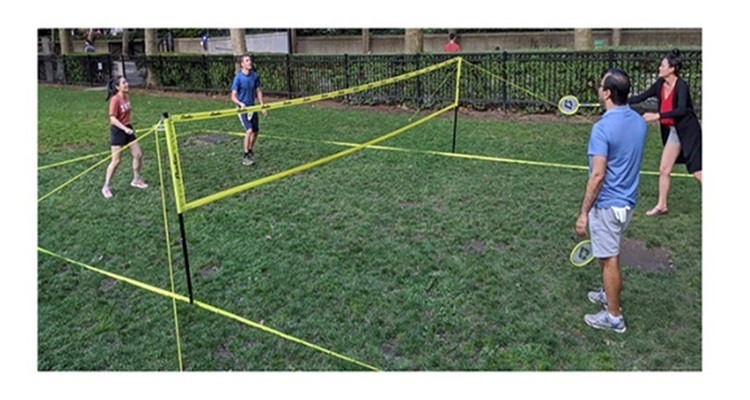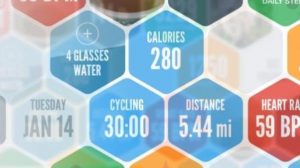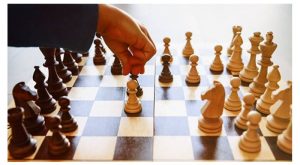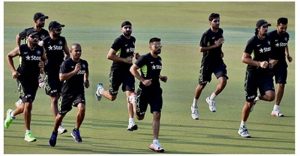
Badminton sport, at one time was more popular among the South-East Asian countries (China & Japan), but today is played by people all over the world. The good news is that today even India is considered a powerhouse when it comes to producing quality badminton players.
Badminton in India
Perhaps, after cricketers, its the Badminton players in India who seem to be quite popular among the masses. First, it was Saina Nehwal, now its Sindhu and Lakshya Sen who are making the country proud at various international badminton competitions.
The introduction of the Indian Badminton League has also added to the excitement and the popularity of the sport in India.
In the past, India has produced great badminton players like Prakash Padukone (father of Bollywood actress Deepika Padukone) and Gopichand Pullela.
Gopichand was only 27 years old when he won the All-England badminton tournament, but because of injury, he knew he could not play for long.
That was when Gopichand decided to become a coach and setup a world-class facility that would ensure that the younger badminton players in India had access to the best coaching in Badminton. Gopichand runs the Gopichand badminton academy that has produced India’s top badminton players in recent times.
Top badminton players in India like Saina Nehwal, Sindu & Srikanth have emerged from the Gopichand badminton academy.
PV Sindhu: Fitness & Diet Secrets
Shuttler PV Sindhu, winner of the silver medal in badminton at the Rio Olympics and first Indian to win a gold in the BWF World Championship, shares her fitness regimen.

“Her daily schedule consists of three sessions, with the first one beginning at 4am. It continues till 6.30 or 7am. We come back by about eight for another couple of hours of group session. Then it’s back again around 11am for an hour and a half. In the evening she has a gym and court session or a gym and running session,” says Gopichand
Sindhu does at least a 100 push-ups and 200 sit-ups a day. The latter are not of a single type but different variations (seven to eight) of exercises that activate the core and abdominal muscles. Thrice a week she does 600 to 700 abdominal routines. By a conservative estimate, she does about 600 pushups and 2400 abdominal exercises each week.
“Sindhu is a tall girl. For her, balance and stability drills are essential. The routine has to keep varying and we tweak it each week. Graded loading is the key,” says physio Kiran Challagundla.
The player has a blood test every two months so that her nutrition and supplements can be tweaked to compensate for any deficiencies. Her body weight and heart rate are constantly monitored to asses her physical condition.
Because of the nature of the sport, lot of legwork is involved. “We do different things. Like two to three sets of ten 400m runs or one 2.4 km run. Some days, we push for a 10 km run. The point is to keep the training varied, not let the body get used to it and therefore stop growing,” says Kiran.
In the fitness industry, this is known as Progressive loading.
Sindhu’s schedule is also tweaked on a weekly basis.
Anand Mahindra recently shared PV Sindhu’s extensive workout video, says “I’m exhausted just watching this video”. He stumbled upon the video after Sindhu won the BWF World Championship.
Brutal. I’m exhausted just watching this. But now there’s no mystery about why she’s the World Champ. A whole generation of budding Indian sportspersons will follow her lead & not shrink from the commitment required to get to the top… pic.twitter.com/EYPp677AjU
— anand mahindra (@anandmahindra) August 27, 2019
PV Sindhu Diet
Gopichand banned junk food and sweets from Sindhu’s diet before the Olympic Games. “The sugar hampers recovery, it causes inflammation,” says Gopi.
So if you have a child and nurture dreams of Olympic glory, “There is nothing like what she prefers. She eats what she is told to.”
“A challenge that we have with Sindhu is that her appetite is very less. We monitor each meal and give her high calorie food when she’s not feeling hungry enough,” says her physio Kiran.
That’s also why supplements are key in her case.
“Even during the Games she has been carrying three types of nutrition supplements in her bag. These vary – high energy, protein-based or recovery inducing.” They can be fluid based or energy bars.
After the six or so hours of training, the day is still not done for Sindhu. There is always recovery. “There are three bits to that. Post practice, at night and then next morning. It comprises active recovery which is yoga, sleep, relaxing in the swimming pool and light fitness. Passive recovery is icing, massage etc,” says Kiran.
Gopi is not too happy that Sindhu does not like pranayam (yogic breathing routines) too much. “Yoga is very good, but they have to believe in it. I do and I hope one day she will too,” says Gopi.
Top Badminton Coaching Academies in India
Though Hyderabad may be the Badminton Capital of India, courtesy Pullela Gopichand’s badminton academy (has given us several Indian badminton players like Saina Nehwal, Sindhu, P. Kashyap, and Gurusai Datt), there are other places in India where you can play & learn the game of badminton professionally.
“Badminton in India is at an inflection point wherein many youngsters have started to take the sport seriously to make it their career choices. These academies help in scouting young talents, nurturing and training them to be the best-of-the-best. These coaching academies churn out talents who can compete with the best in the world and win India many international accolades.
- These badminton coaching academies in India have state-of-the-art facilities for coaching badminton.
- These are built to international standards and provide players with the best facilities so that they can compete with the best at global tournaments.
- These academies send the “right talent” for foreign exchange programs and also host national camps within its premises.
- The aim is to identify talent at a young age and to help them build skills using modern techniques.
Related: Badminton rules
Badminton Techniques
Overhead shot from the backhand corner: Popular with shorter badminton players
The overhead shot from the backhand corner in Badminton is a favorite shot of players with a shorter frame. Japanese player Nozomi Okuhara uses that shot to her advantage.
In badminton, most players try to play the shuttle towards the backhand of the opponent as much as possible, because most players find it difficult to hit the shuttle a long distance with their back-hand.
Its easier to do so, especially when your opponent is slightly shorter. To avoid taking the shot on the backhand, players with shorter stature mostly play the overhead shot from the backhand corner (you basically play the shot with the forehand but you have to bend backwards balancing on your left leg).
Japanese player Nozomi Okuhara used that shot to her advantage while playing the finals against India’s Sindhu inthe 2017 World Badminton Championships (she eventually won the match).
Nozomi Okuhara is 155-cm tall (5 ft 1 in) and the right-hander’s signature shot is the overhead from the backhand corner.
She used the extra millisecond afforded by her short stature to get into a position that looks like a gymnastic pose (or a difficult Iyengar yoga pose). She bends to such an extent, at the point of contact, her racket is almost parallel to the floor, and her back fully arched.
And despite that difficult angle, Okuhara manages to swing her arm quickly and with ease. Okuhara’s proficiency at playing that shot (using that pose) means she plays very fewer backhands and is able to hit the shuttle very far on to the other side.
So if you are a badminton player with a shorter height, perhaps, its time to master this shot and get an upper-hand, or at least negate the advantage available to taller players.
Badminton Equipment and Supplies
- RACQUETS
- SHUTTLECOCKS
- COMPLETE SETS
- EQUIPMENT BAGS
Find more badminton equipment here.
Fancy a game of badminton? Most clubs/gymkhanas let you play badminton on their courts, but its best to book the court in advance because there’s always a mad rush for the courts, especially during peak hours.
So it’s wise to book the badminton court well in advance to avoid any disappointment!










Leave a Reply